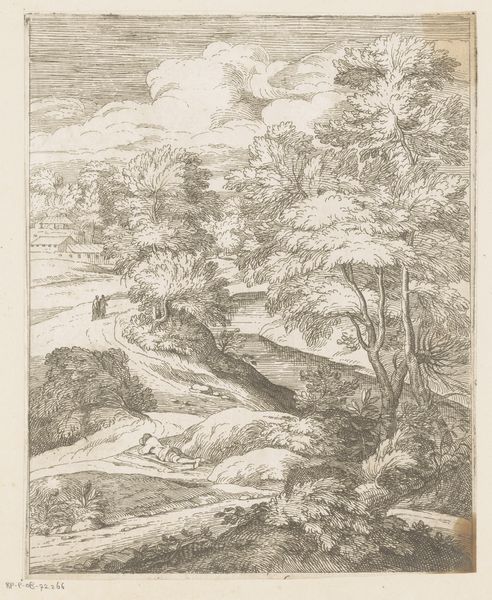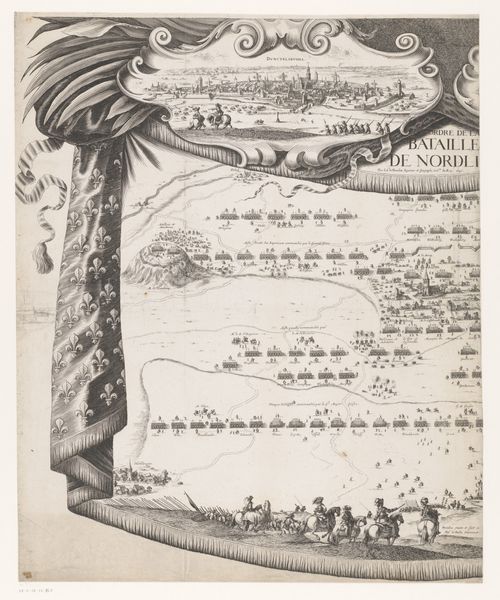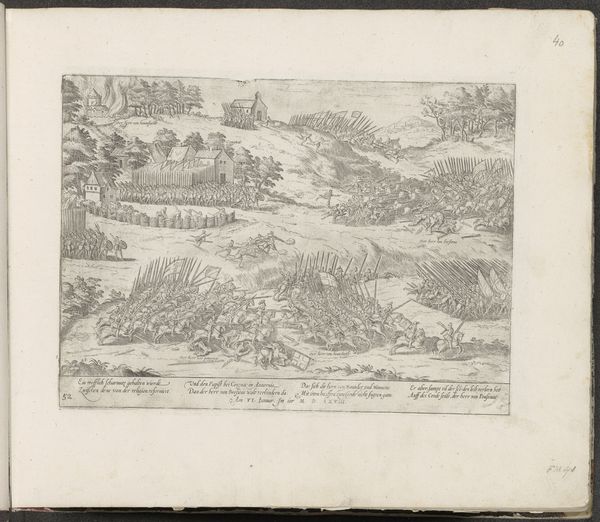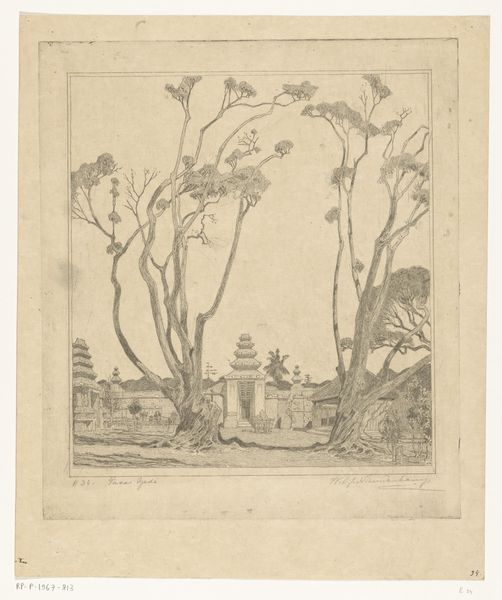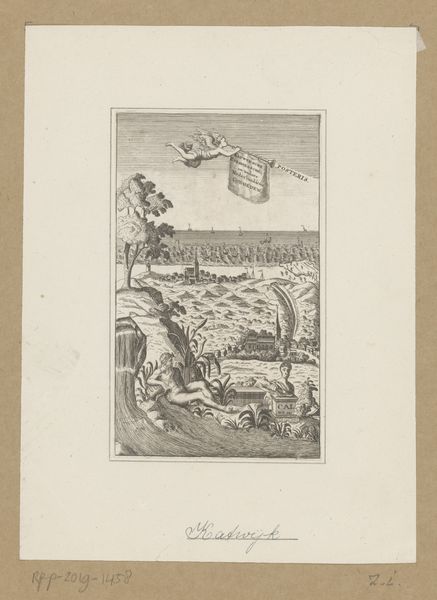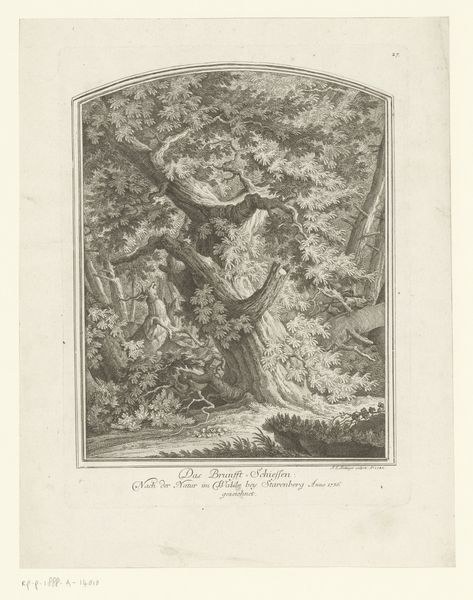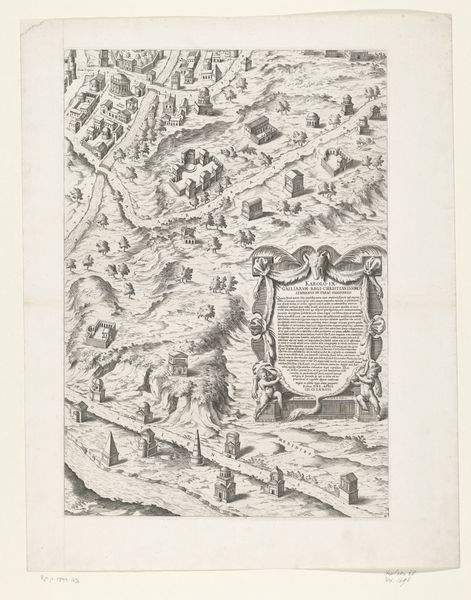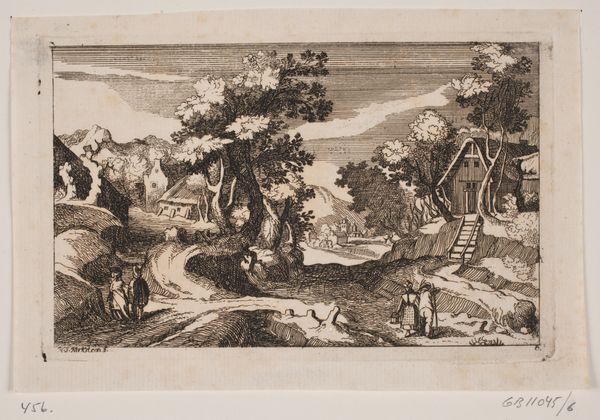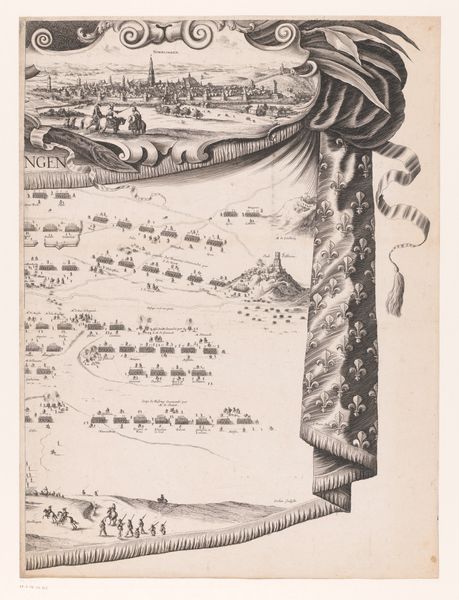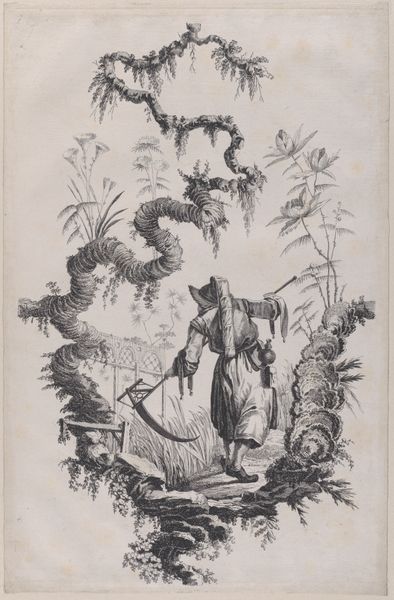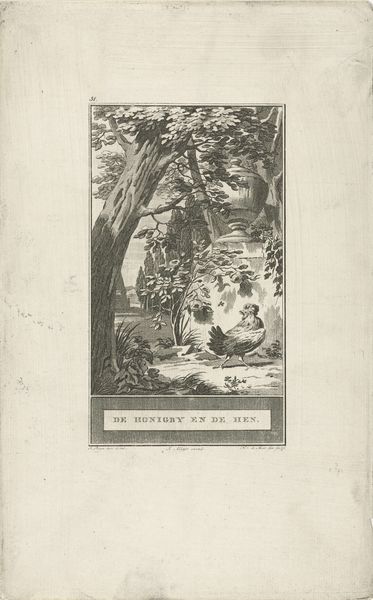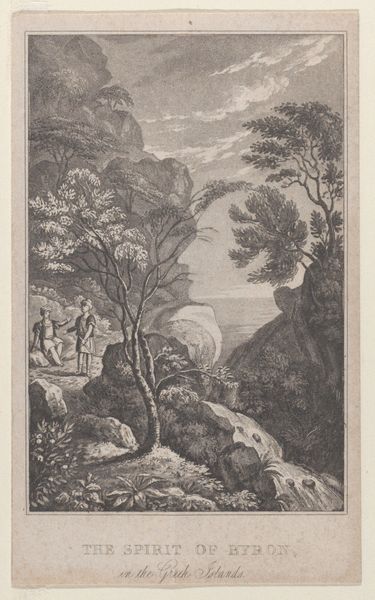
print, engraving
#
baroque
#
pen drawing
# print
#
pen illustration
#
pen sketch
#
landscape
#
personal sketchbook
#
sketchwork
#
ink drawing experimentation
#
pen-ink sketch
#
line
#
pen work
#
sketchbook drawing
#
cityscape
#
history-painting
#
sketchbook art
#
engraving
Dimensions: height 606 mm, width 466 mm
Copyright: Rijks Museum: Open Domain
Curator: Let's delve into "Slag bij Nördlingen (linkerdeel)," an engraving dating approximately from 1645 to 1686, currently residing here at the Rijksmuseum. It’s attributed to Nicolas Cochin. Editor: It's surprisingly intricate, isn’t it? The fine lines create this almost overwhelming sense of activity across the landscape. The contrast is subtle, giving it a sort of dreamy, faded quality. Curator: Indeed. Cochin meticulously rendered a bird's-eye view of the battle, which provides not only a historical document of a crucial military engagement, but also gives insights into 17th-century power dynamics, the role of the monarchy, and the theater of war as carefully orchestrated performance. Editor: The act of producing prints like this… it makes you think about the engravers themselves. Cochin must have possessed immense skill to translate the chaos of battle into something so meticulously rendered, almost miniature, on a printing plate. How much control did Cochin have? I'm also interested in the ink used – it doesn’t bleed over time. What was it composed of? Curator: It's not just about artistic skill; engravings like this served to disseminate specific narratives about conflicts. It's a tool to showcase the power of Louis XIV with great pomp. Notice the details about the monarchy. The placement within a luxurious-seeming border of plants! These details tell us as much about intended messaging for the upper classes of the period as the materials themselves, don't you think? Editor: I see your point about the elite. The border of foliage lends an almost pastoral, stylized framing for something incredibly brutal. Almost mocking in contrast of the harsh realities and labor with the delicacy of it. Curator: Right! The print medium makes the war digestible. This piece serves not as a realistic depiction, but as carefully crafted propaganda. This illustrates how rulers in the 17th century controlled their own image. Editor: The sheer density of detail invites such close inspection. Looking closer reminds you of just how labour-intensive printmaking really is... Thanks for giving me an understanding of its history! Curator: It goes both ways! Considering art as an extension of politics offers a more nuanced vision. A useful point of view, considering how war still persists in contemporary culture.
Comments
No comments
Be the first to comment and join the conversation on the ultimate creative platform.
